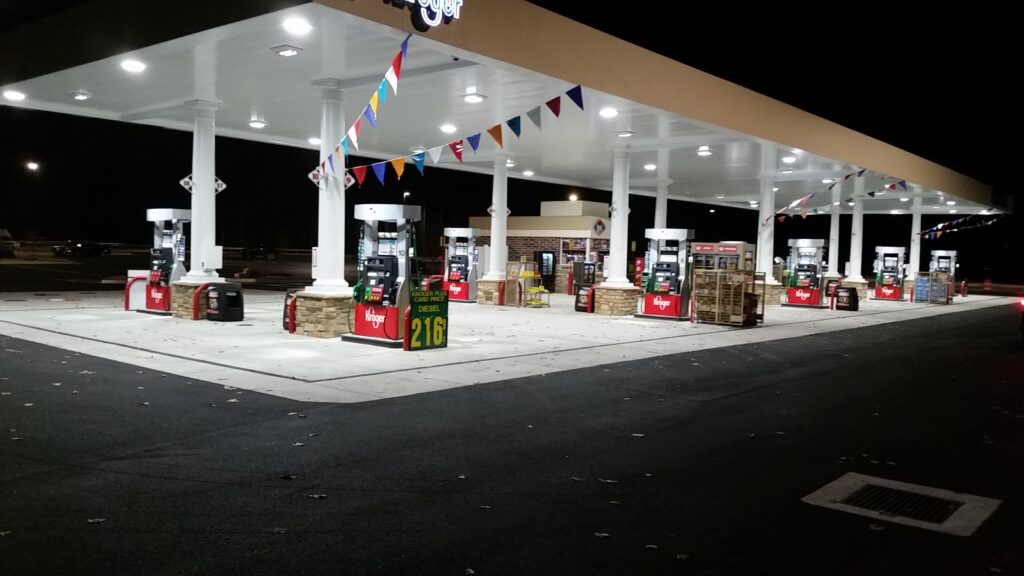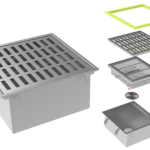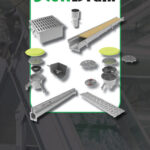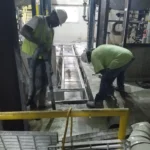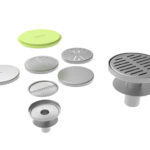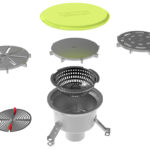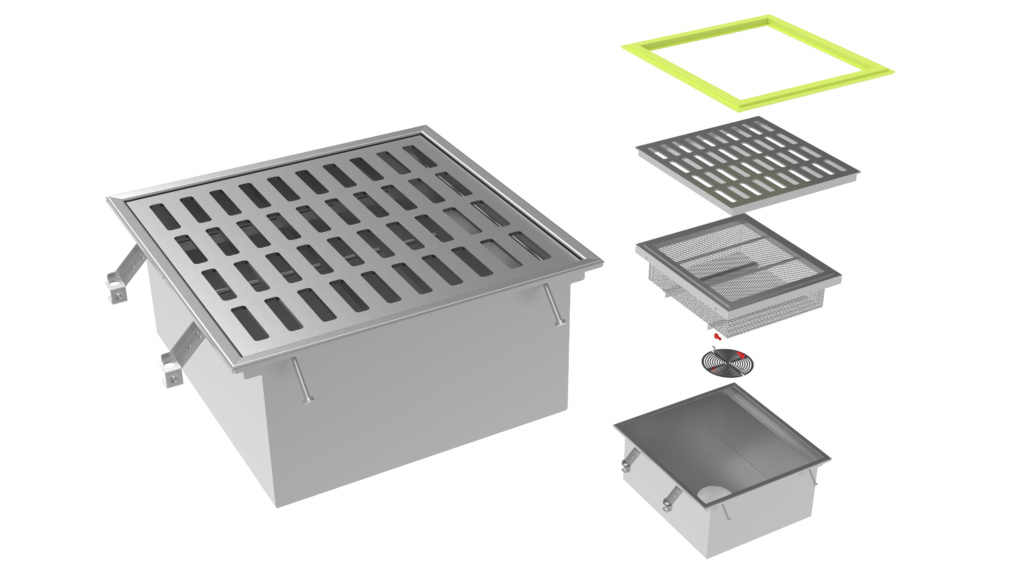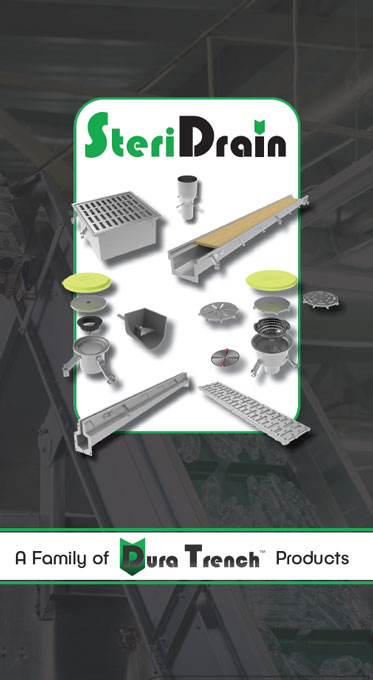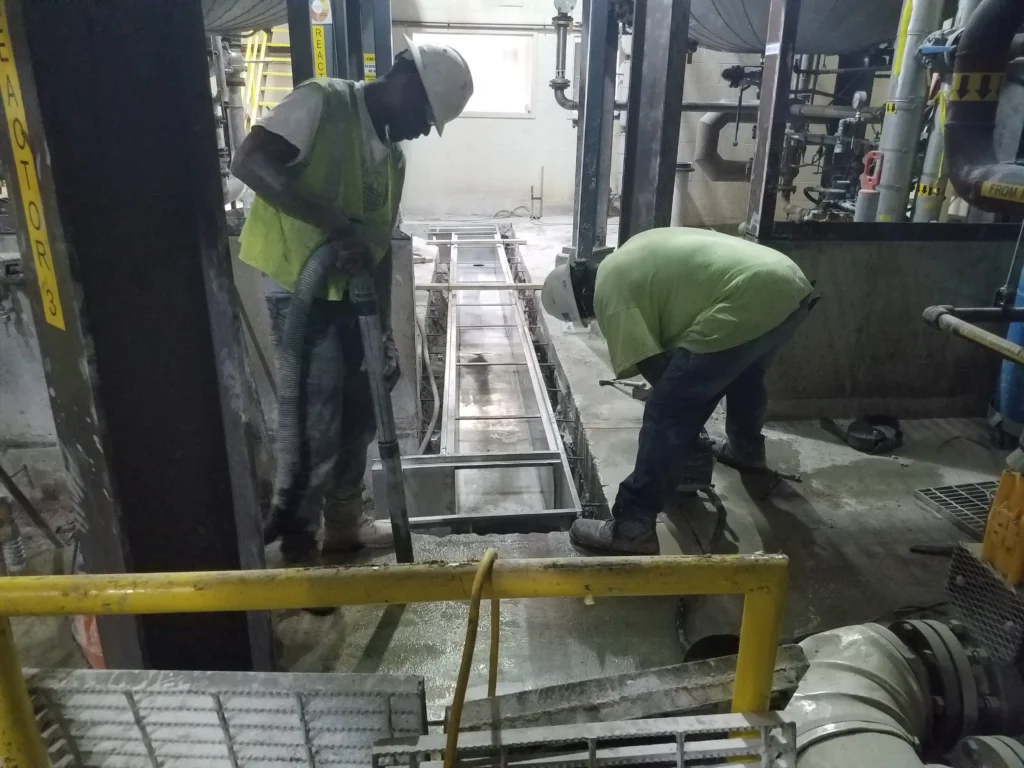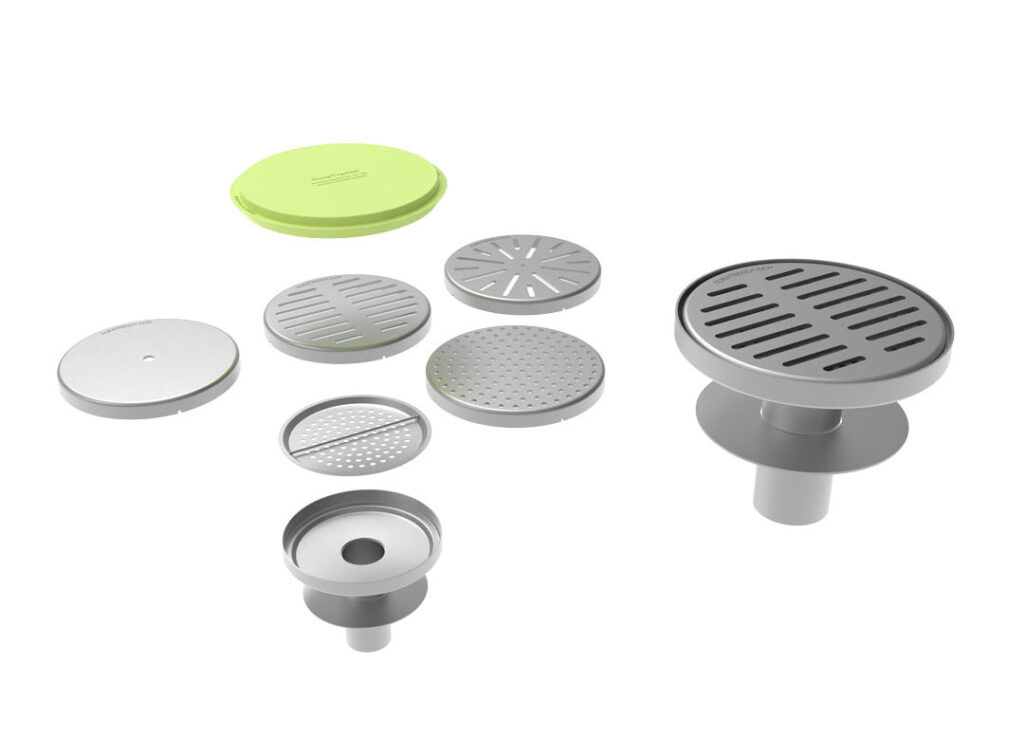Finding the right drainage solution can feel like a lot of work. There are variables that must be considered, such as the use of the area and the kind of drain that will best handle the volume and frequency of water runoff that your property or building generates. In many cases, a trench drain is your best drainage option due to its cost and effectiveness as a drainage solution. Trench drains systems can be placed in almost any environment and work perfectly in almost any kind of soil. These are drains that are easy to cover to protect the drain from filling up with debris or catching people’s feet as they pass by. There are so many applications that trench drains are perfect for, and they are very easy to install. If you have been considering installing a trench drain on your property but are not sure how these drainage solutions work, you need to read on!
What is a Trench Drain?
In the simplest of terms, a trench drain is a gutter that is placed in the ground. Trench drains can come in many shapes and sizes, but they are usually entirely linear drains that offer a wide, uninterrupted space for water to flow. This kind of drain might be made from polymer concrete, stainless steel, or Fiber reinforced concrete. Trench drains can be left open at the top or covered. This decision depends on the area in which they have been placed and the kind of function that they are needed for. You might also need some accessories for your trench drains like end caps and outlets or catch basins. You can also use this kind of drain with a sump pump or other pumping system. 
How Does a Trench Drain Work?
Trench drains operate primarily due to gravity. This means that the trench installation that is done for your needs must have the right grade built into it, or it will not work. The slope must be carefully determined prior to excavation for the trench drain, and then the run and the width must be evaluated based on the ultimate drainage needs for the area. The slope of your drainage system will be built entirely based on location. If you have some natural drainage that is already happening, the trench drain that is placed might offer a slightly increased slope to make it perform better. The slope helps increase water velocity, which speeds up the drainage process and prevents blockages. The greater the slope of the trench drain, the better it will work to remove standing water from a plateau or a low spot in your yard or parking lot or near your home. The water runoff that is generated by the slope must then be managed by the width of the drain. Common prefabricated drain widths run anywhere from 5 inches to 12. You can also custom order greater widths from some companies. The wider the trench, the more water it can handle. This means that areas that experience a significant amount of pooling or ponding might need a very wide trench to help attend to the runoff that needs to pass through them. The wider the trench, the harder it is to find a cover for, and the more likely it is to get clogged if it is left open. The final consideration related to the function of a trench drain is the run. The run of the drain is a factor in the slope, and the run is partially determined by the distance that must be covered to get runoff into a catch basin, sewer, or another collection point. The longer the run of a trench drain, the slower the water will move and the greater the slope that is needed to make the drain work correctly. Trench drains operate best when they are shorter and steeper rather than longer and gently sloped.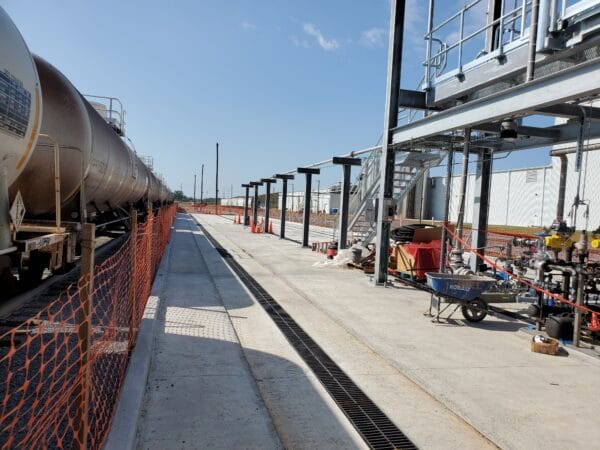
What are Other Parts of Trench Drain Design?
The design of some trench drains can be optimized to help prevent clogs and debris from getting into the drain at all. Trench drains that are narrower will be more likely to clog if they are not covered properly and cared for frequently. When you have a narrow trench drain on your property, you will need to make sure that the drain covers are lifted, and debris is removed periodically. Taking care of wider drains is easier from the standpoint of debris and messes, but only if there are covers over a wide trench drain. Open trench drains can require quite a bit of maintenance to prevent issues with debris and clogs. The most common solution for this kind of need is to create a French drain, which is not a trench drain and is instead a perforated pipe placed in a trench and covered with rocks. This is not the right solution for high volumes of water runoff, but it can be an aesthetically pleasing and simple solution for cases where a wider trench drain might not be needed. Many drainage installations will need catch basins or sumps to be attached to the trench drains that are in place. This means that you cannot just lay your trench drain and call it a day. Adding the right kind of catch basin or sump is critical for some drainage systems. In other drainage arrangements, you might be able to connect your trench drain to the sewer system to remove your runoff from your property. These collection devices or the connected devices that allow the trench drain to be attached to the sewer system can be made of various materials as well and can be custom-made for your unique drainage system, but you can usually buy prefabricated products for your needs. The volume of runoff that you need to attend to and the angle and slope of your property can dictate the necessity for a catch basin or sump.
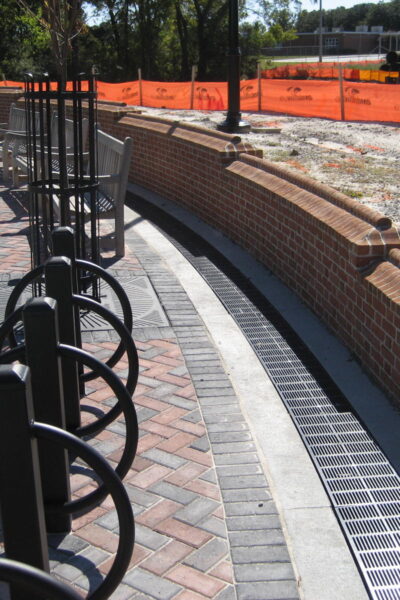
Does the Material of the Trench Drain Matter?
Some people have questions about which of the different styles of trench drain offers the most optimal performance. There are different kinds of prefabricated trench drains for different environments, but all properly installed trench drains should operate correctly to remove the water buildup that you need to remove. Concrete trench drains are often most practical for areas that experience a lot of vehicle traffic or in places where heavy items must pass over them. These are sturdy and strong trenches, and they can handle caustic runoff as well as regular water runoff. Polymer products are lighter in weight and are not as effective in areas with heavy vehicle traffic. They are easier to install overall, and this kind of trench drain is very durable. This kind of trench drain will likely not hold up to caustic runoff of any kind but can handle all other challenges with ease. Stainless Steel trench drains are made to last, and they are some of the most resilient products on the market. These kinds of prefabricated trench drains are used in places like factories and breweries where caustic liquids are a common part of the production process. Stainless steel drains can usually handle vehicle traffic, and they are easy to install and care for. Grating materials probably have the largest impact on the function of a trench drain, and you will need to be sure that you have picked grating that is durable enough for the task at hand. The grating that you select for your drains will also need to offer the correct sizes of slots or holes to allow the volume of water into the trench drain that must be dealt with. When you place a grate on a drain, you can choke back the amount of water that it can take in, so you need to be sure that you are not impeding the function of the trench drain.
How Trench Drains Are Very Effective?
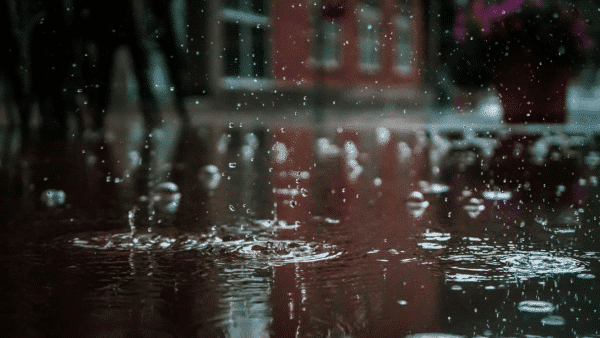 Trench drains are one of the most effective kinds of drainage solutions that you can choose. There are many situations where this kind of drain might be applicable and useful as well. This is a practical drainage solution that does not require much maintenance, and that can be made to appear discrete and tidy with ease. Trench drains work well near pools and fountains, walkways and roadways, and also in yards and landscaping areas. Due to the fact that trench drains are so widely applied for all of these different needs, there are many kinds of prefabricated trench drains out there as well as all of the companion products to make your drains work correctly. You will have to outlay a little money to get the excavation done for your trench drains, but the drainage supplies themselves are not that expensive overall. Adding trench drains to your home or business locations can make it so easy to manage standing water and other runoff. This is a highly effective drainage solution that can make your property fully usable and free from standing water or excessive runoff.
Trench drains are one of the most effective kinds of drainage solutions that you can choose. There are many situations where this kind of drain might be applicable and useful as well. This is a practical drainage solution that does not require much maintenance, and that can be made to appear discrete and tidy with ease. Trench drains work well near pools and fountains, walkways and roadways, and also in yards and landscaping areas. Due to the fact that trench drains are so widely applied for all of these different needs, there are many kinds of prefabricated trench drains out there as well as all of the companion products to make your drains work correctly. You will have to outlay a little money to get the excavation done for your trench drains, but the drainage supplies themselves are not that expensive overall. Adding trench drains to your home or business locations can make it so easy to manage standing water and other runoff. This is a highly effective drainage solution that can make your property fully usable and free from standing water or excessive runoff.



